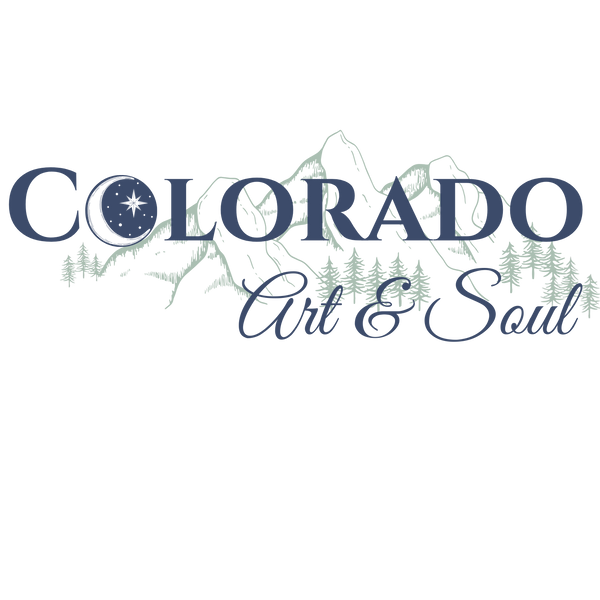
Lammas/Lughnasadh: Honoring the First Harvest
As the Wheel of the Year turns, we arrive at Lammas (also called Lughnasadh), the first harvest festival, marking the beginning of the grain harvest and the transition from summer to autumn. Celebrated on August 1st, this sabbat is a time of gratitude, abundance, and preparation for the darker half of the year.
In this blog post, we’ll explore the history of Lammas/Lughnasadh, activities to celebrate, decoration ideas, traditional foods, incense blends, and spellwork to help you embrace the magic of the season.
The History of Lammas/Lughnasadh
The festival of Lughnasadh is named after Lugh, the Celtic god of the sun, craftsmanship, and skill. According to legend, Lugh created this festival in honor of his foster mother, Tailtiu, who sacrificed herself to clear the land for agriculture. Lughnasadh was a time of feasting, games, and market fairs in honor of Lugh and the abundance of the harvest.
Lammas ("Loaf Mass") is the Anglo-Saxon version of the holiday, where the first loaves of bread were baked from the newly harvested wheat and offered in thanks. Farmers would bless and break bread as a way of ensuring a fruitful harvest and protection through the coming months.
Whether you call it Lammas or Lughnasadh, this festival is about honoring the fruits of our labor, celebrating abundance, and preparing for the changes ahead.
Activities to Celebrate Lammas/Lughnasadh
Bake Bread
Since Lammas literally means “Loaf Mass,” baking bread is one of the most traditional ways to honor the festival. Bless your bread with intentions of gratitude and prosperity before eating it or sharing it with loved ones.
Light a Fire or Candle
Since Lughnasadh is a festival of Lugh, the Sun God, lighting a bonfire or golden candle is a way to honor the waning power of the sun as we move toward autumn.
Harvest Offerings & Gratitude Rituals
Take time to reflect on what you’ve accomplished this year. Write down what you are grateful for and make an offering to the earth, spirits, or deities—this could be a piece of bread, grain, or a small bundle of herbs left in nature.
Honor Lugh & Your Own Skills
Lughnasadh was traditionally a festival of skill and competition. Celebrate by:
- Practicing a craft, hobby, or talent that is important to you.
- Setting new goals for self-improvement.
- Hosting friendly games or competitions with family and friends.
Create a Corn Doll or Harvest Altar
A corn doll represents the spirit of the grain and is traditionally made from wheat, corn husks, or straw. Place it on your altar as a symbol of protection and abundance.
Go on a Nature Walk & Collect Grains & Seeds
Gather grains, flowers, and seeds as a way of connecting with the energy of the harvest season. You can use these as offerings or decorations for your altar.
Decorations for Lammas/Lughnasadh
Your home and altar should reflect the golden warmth of the season and the rich abundance of the first harvest.
Grain & Wheat Bundles – Symbolize the fruits of the harvest and the cycle of life.
Golden, Yellow, and Orange Candles – Represent the waning sun and abundance.
Sunflowers, Corn, & Seasonal Flowers – Bring the energy of growth and gratitude into your space.
Loaves of Bread & Jars of Grains – Honor the bounty of the harvest.
Fruits & Vegetables – Apples, berries, and squash represent fertility and abundance.
Food for a Lammas/Lughnasadh Feast
Since Lammas is all about the first harvest, foods should highlight grains, fruits, and seasonal produce.
Homemade Bread – Symbolizes prosperity, nourishment, and gratitude.
Honey & Mead – A sacred drink of celebration and abundance.
Apples & Berries – Represent fertility, wisdom, and the transition to autumn.
Corn Dishes – Cornbread, roasted corn, or polenta connect to the harvest energy.
Grain-Based Foods – Oatcakes, wheat crackers, and barley soup to honor the harvest.
Seasonal Vegetables – Squash, carrots, potatoes, and greens celebrate earth’s bounty.
Incense & Scents for Lammas/Lughnasadh
Fill your space with scents of the earth and harvest to honor the season’s energy.
Frankincense & Myrrh – For protection and gratitude.
Cinnamon & Nutmeg – To invoke warmth and abundance.
Chamomile & Sunflower – To connect with the solar energy of Lugh.
Apple & Clove – For prosperity and the changing seasons.
Rosemary & Sage – For purification and reflection.
Spellwork for Lammas/Lughnasadh
Bread Blessing & Prosperity Spell
- Bake a small loaf of bread with cinnamon, honey, or herbs.
- As you knead the dough, visualize abundance and success flowing into your life.
- When the bread is baked, break a piece off and offer it to the earth or spirits as a token of gratitude.
Harvest Gratitude Jar
- Take a small jar and fill it with seeds, dried herbs, and grains.
- Write down things you are grateful for on small pieces of paper and add them to the jar.
- Keep it on your altar as a reminder of your blessings and achievements.
Fire Release Ritual
- Write down anything you wish to release (old habits, fears, or negative patterns).
- Light a candle or small fire, and as you burn the paper, visualize yourself letting go and making space for new opportunities.
Corn Husk Protection Charm
- Take dried corn husks and tie them together with a red ribbon.
- Whisper a protection spell over them and hang them by your door for abundance and safety.
Conclusion
Lammas/Lughnasadh is a powerful time to celebrate abundance, gratitude, and the turning of the seasons. Whether you choose to bake bread, honor Lugh, reflect on your achievements, or perform spellwork for prosperity, this festival invites us to pause and give thanks for all that we have cultivated—both physically and spiritually.
May your harvest be bountiful, your heart full, and your spirit nourished. Blessed Be!
